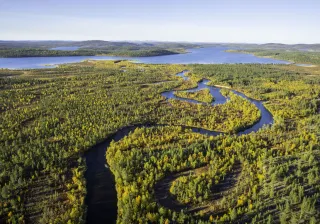Do you know the sound when you try to take your new TV from the package? Huge amount of white plastic cushioning squeaks when you try to unpack. I hate that sound.
Expanded polystyrene (EPS) is used in packaging in large quantities. In many countries, the lack of recyclability means it creates mountains of plastic-based waste that must be dealt with via incineration. In the near future, there is a need for cushioning that is made from more sustainable material – wood.
A search for sustainable alternatives
An eco-friendly alternative is needed – one that both keeps goods safe during transport and is easily recycled or even composted at home.
One current solution is polylactide (PLA) foam made from renewable resources (like corn). This provides good water resistance and similar performance to EPS. However, PLA foam looks so similar to EPS that the average consumer often can’t tell the difference between them and may not even realize it is compostable. Composting of PLA is also a bit difficult for consumers because it needs higher temperatures than can be reached in a home composter. EU citizens are lucky, because a significant proportion of the biowaste collected in EU is utilized in industrial composting.
The other EPS alternatives currently being used are corrugated board and molded fibre packages made from wood pulp. Those can be disposed of through existing paper recycling programs. However, those often don’t offer the same level of protective cushioning or thermal properties as EPS.
Is there a better solution?
The good news is that VTT has developed a foam-formed cellulose-based material that could replace EPS in some applications. The material is based on a 100% renewable material, wood. Foam formed materials can be recycled in the same way as cardboard or composted like paper. In addition to being eco-friendly, the foam-forming process allows different types of materials to be combined in order to improve mechanical performance. Addition of longer fibres or sawdust are giving the material a more ‘natural’ look, which helps consumers to recognize that the brand has replaced EPS with renewable alternative.
Foam-formed cellulose-based packaging materials are a highly attractive alternative to EPS for disposable packaging applications. However, when talking about packaging in general, plastics have some properties that are difficult to compete with. There is no single easier answer when it comes to finding a viable replacement for plastics; instead, the goal should be to find the optimal solution for specific end uses.
VTT has been working hard to make the technology commercially viable and bring bio-based packaging into the mainstream. The technology is soon ready to take the next steps. Bio-based packaging is going to be an integral part of our future.






